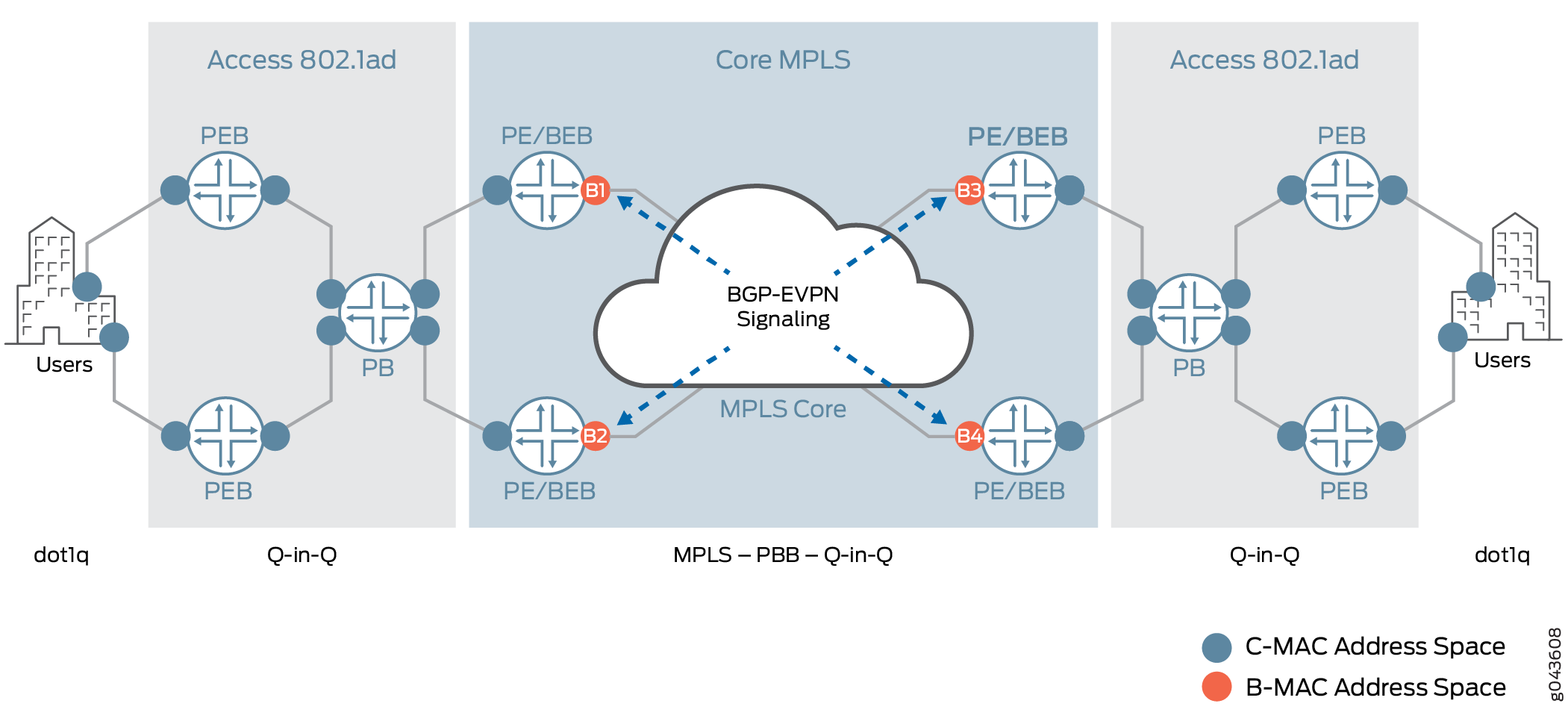EVPNs: The answer to your MPLS issues
![]() I had a good discussion with my Buddy JJ tonight on kind of the next step of network evolution for provider networks. Many providers have evolved to MPLS networks with VPLS. There are some inherent issues with this when it comes to things like bonding, MLAG, among other issues. Nothing is perfect, right?
I had a good discussion with my Buddy JJ tonight on kind of the next step of network evolution for provider networks. Many providers have evolved to MPLS networks with VPLS. There are some inherent issues with this when it comes to things like bonding, MLAG, among other issues. Nothing is perfect, right?
So as we dive into What is EVPN I want you to know I am approaching this from a service provider standpoint. I also am no EVPN expert, but I am seeing it more and more as a solution to solve specific issues. As a result, EVPN is sliding into a natural progression of the service provider network.
So what is EVPN?
There are folks much more versed on EVPN than I am. As a result, I will lean on some already written articles.
https://blog.ipspace.net/2018/05/what-is-evpn.html
https://www.cisco.com/c/en/us/products/ios-nx-os-software/ethernet-vpn.html#~stickynav=1
Components of EVPN
Now that you have a high-level overview of EVPN, what are some of the major components and features you should know? Let’s dive into that
Unified control plane. EVPN can be used throughout your network. You don’t have to use one stack for data center, one for metro to the data center, and yet another for connectivity between data centers. You can bring it all under one control roof so to speak.
EVPN, through BGP, marries the Layer 2 and Layer 3 layers together. With MPLS everything is controlled at the layer3 level. Now with EVPN Mac addresses become much more important. For example, Each EVPN MAC route announces the customer MAC address and the Ethernet segment associated with the port where the MAC was learned from and is associated MPLS label. This EVPN MPLS label is used later by remote PEs when sending traffic destined to the advertised MAC address. Pretty cool huh?
As networks grow network engineers learn about things such as north-south traffic and east-west traffic. Microsoft has a great article which explains this concept. https://blogs.technet.microsoft.com/tip_of_the_day/2016/06/29/tip-of-the-day-demystifying-software-defined-networking-terms-the-cloud-compass-sdn-data-flows/
East-West – East-West refers to traffic flows that occur between devices within a datacenter. During convergence for example, routers exchange table information to ensure they have the same information about the internetwork in which they operate. Another example are switches, which can exchange spanning-tree information to prevent network loops.
North | South – North- South refers to traffic flows into and out of the datacenter. Traffic entering the datacenter through perimeter network devices is said to be southbound. Traffic exiting via the perimeter network devices is said to be northbound.
So, if you are a growing Service provider look at EVPN. In some upcoming articles, I will talk more about various components of EVPN and such.
j2networks family of sites
https://j2sw.com
https://startawisp.info
https://indycolo.net
#packetsdownrange #routethelight
